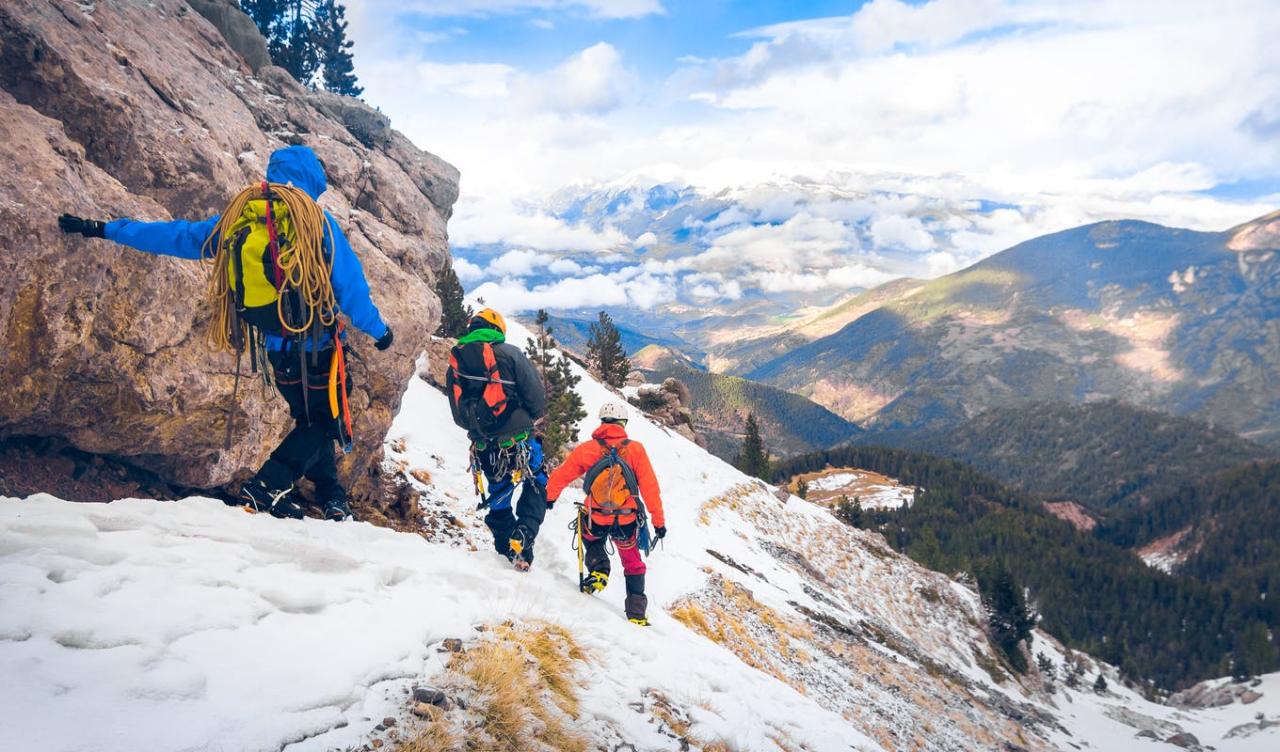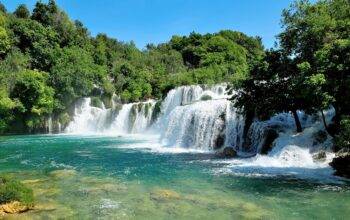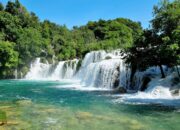In a world increasingly digitized and urbanized, the allure of escaping into the wild, confronting personal limits, and experiencing the raw power of nature has never been stronger. Adventure travel, once the domain of extreme athletes and seasoned explorers, is now evolving, becoming more accessible, diverse, and deeply meaningful, offering new thrills revealed for a broader spectrum of enthusiasts. This comprehensive article will delve into the compelling factors driving the evolution of adventure travel, dissecting the exciting new trends shaping the industry, exploring its profound benefits for personal growth and environmental stewardship, and highlighting how this dynamic sector is redefining our relationship with exploration. Prepare to discover the next frontier of human experience, where adrenaline meets authenticity.
The Quest for the Extraordinary
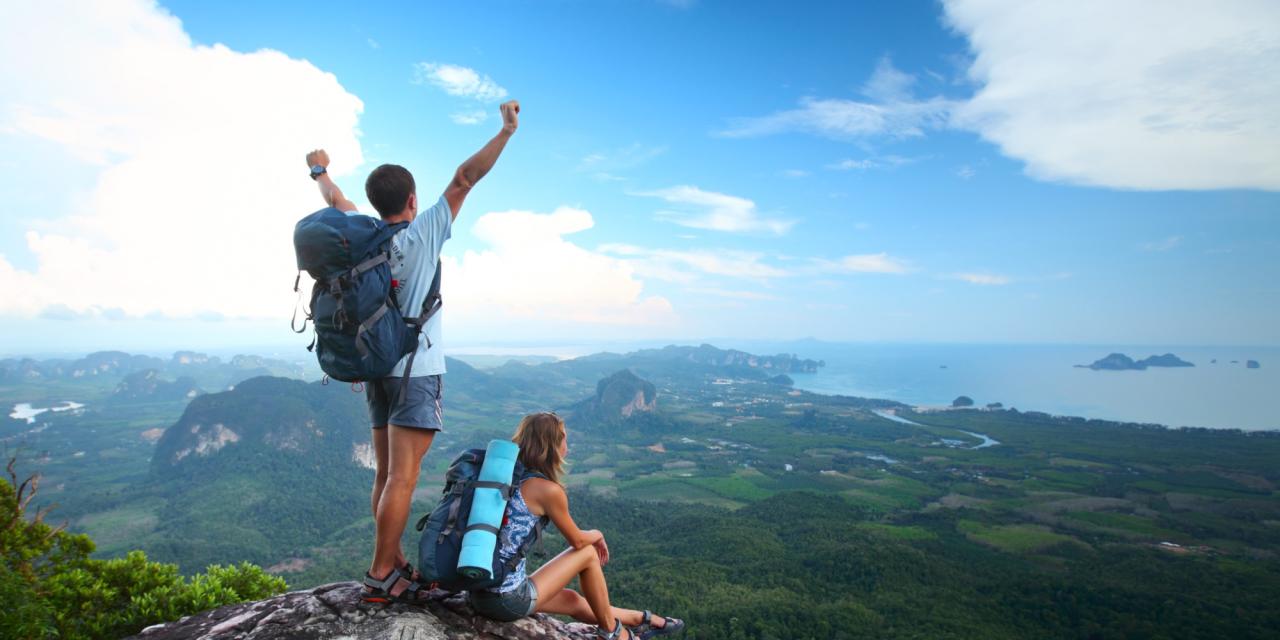
For generations, the idea of an “adventure” often conjured images of scaling Everest or traversing vast deserts. While these grand expeditions remain, the definition of adventure has expanded dramatically. Modern travelers are seeking experiences that offer a blend of physical challenge, mental stimulation, cultural immersion, and a deep connection to the natural world, all while prioritizing sustainability and personal transformation.
Today’s adventure travel is less about conquering nature and more about respectfully engaging with it. It’s about pushing personal boundaries, whether that means a multi-day trek through remote wilderness, learning to surf in a foreign land, or even engaging in unique, adrenaline-pumping activities closer to home. This evolution is driven by a desire to break free from routine, to feel truly alive, and to collect memories that resonate far beyond a typical vacation. It’s an investment in self, offering unparalleled opportunities for growth, resilience, and a renewed perspective on life.
The Forces Fueling Adventure Travel’s Evolution
Several powerful trends and societal shifts are contributing to the dynamic growth and diversification of the adventure travel sector:
A. Increased Focus on Personal Well-being and Mental Health:
In a demanding world, people are seeking active ways to de-stress, reconnect with themselves, and improve mental fortitude. Adventure travel, with its emphasis on outdoor activity, digital detox, and overcoming challenges, provides a potent antidote to modern anxieties, fostering resilience and mental clarity. It’s seen as a vital component of holistic health. The physical exertion often associated with adventure travel, from hiking challenging trails to paddling through rapids, releases endorphins, which are natural mood boosters. Furthermore, spending time in nature, away from the constant barrage of notifications and urban noise, has been scientifically proven to reduce cortisol levels (the stress hormone), improve mood, and enhance cognitive function. This makes adventure not just a leisure activity, but a therapeutic tool for modern living.
B. Technological Advancements in Gear and Safety:
Lighter, more durable, and technologically advanced gear (e.g., GPS devices, satellite communicators, high-performance apparel) has made once-dangerous or inaccessible areas safer and more comfortable for a wider range of participants. Improved safety protocols and rescue capabilities also contribute to greater accessibility. Modern equipment like advanced water filtration systems, lightweight and durable tents, and multi-functional tools have made extended trips into the wilderness more manageable and less daunting. The proliferation of accessible satellite communication devices means help is often just a button press away, even in the most remote areas, significantly lowering the perceived risk for many potential adventurers.
C. Desire for Authentic and Experiential Travel:
Travelers are moving away from passive sightseeing towards active participation and genuine cultural immersion. Adventure travel inherently offers deeply authentic experiences, whether it’s trekking with indigenous guides, learning traditional skills, or experiencing remote cultures firsthand. This emphasis on unique, hands-on engagement is a significant draw. Rather than simply observing a ritual or a craft, travelers can now learn to weave alongside local artisans, participate in traditional cooking classes, or join community-led conservation efforts. These types of experiences offer a richer narrative and a deeper connection to the destination, providing insights that a standard tour simply cannot.
D. Influence of Social Media and Visual Storytelling:
Platforms like Instagram and YouTube showcase breathtaking adventure photography and videos, inspiring a broad audience with stunning visuals of remote landscapes, exhilarating activities, and transformative journeys. This visual inspiration demystifies adventure and makes it aspirational for many. The rise of travel vloggers and influencers who document their real-time adventures, often with raw, unedited footage, has created a sense of authenticity and attainability for viewers. This visual storytelling not only showcases destinations but also demonstrates the personal growth and excitement that comes from overcoming challenges, sparking wanderlust in a broader demographic.
E. Growth of Accessible Adventure Options:
The industry is diversifying to cater to all fitness levels and abilities, from gentle wildlife safaris and guided nature walks to extreme sports. Operators are creating tailored trips that allow more people to experience adventure, regardless of their prior experience or physical limitations. This includes adaptive sports and specialized tours. For instance, there are now guided kayaking trips suitable for beginners, rock-climbing courses with certified instructors, and even multi-day hikes designed with less strenuous routes and comfortable lodging options. This deliberate expansion of offerings ensures that adventure is no longer exclusive to the super-fit or the highly experienced.
The Diverse Spectrum of Modern Adventure
Adventure travel is no longer a monolithic category. It encompasses a vast and diverse range of activities and experiences, catering to every level of thrill-seeker and explorer.
Emerging and Evolving Adventure Travel Types
A. Sustainable and Regenerative Expeditions:
Moving beyond just “eco-friendly,” these trips focus on leaving a place better than found. This includes active participation in conservation projects, reforestation, wildlife monitoring, and deep community engagement that directly benefits local environments and populations. Examples include marine conservation dives or volunteer treks in protected areas. These expeditions are designed with a holistic understanding of impact, often involving collaboration with local scientists and NGOs, and ensuring that tourist dollars directly fund ongoing conservation efforts, making the traveler a participant in positive change.
B. Micro-Adventures and Urban Adventures:
Short, local, and impactful adventures that can be completed in a few hours or a weekend. This includes urban climbing, night hiking in city parks, bike-packing in nearby nature reserves, or even scavenger hunts that reveal hidden urban gems, making adventure accessible to daily life. The beauty of micro-adventures lies in their simplicity and spontaneity; they transform everyday surroundings into playgrounds for exploration, fostering a renewed appreciation for local environments and the spirit of discovery without extensive travel or elaborate planning.
C. Wellness-Integrated Adventures:
These combine physical challenge with practices for holistic well-being. Think multi-day treks culminating in yoga retreats, surf camps with mindfulness sessions, or mountain biking tours complemented by healthy, organic meals and recovery treatments. The goal is complete mind-body rejuvenation. These trips recognize that true adventure isn’t just about physical exertion, but also about mental clarity, emotional balance, and physical recovery. They often incorporate elements like meditation, healthy cuisine workshops, and therapeutic massages alongside the adventure activities.
D. Cultural Immersion and Indigenous Journeys:
Beyond just visiting, these adventures involve living alongside local communities, learning traditional skills (e.g., hunting, foraging, weaving), participating in ceremonies, and gaining firsthand insights into indigenous ways of life, guided by local knowledge and respecting cultural protocols. This often takes the form of homestays or community-run tours. These journeys are designed to be respectful, reciprocal, and educational, aiming to preserve and promote indigenous cultures while providing visitors with a profoundly authentic and humbling experience. They prioritize mutual understanding and benefit.
E. “Slow Travel” Expeditions:
Instead of rushing through multiple destinations, these adventures involve spending extended time in one region, deeply exploring its landscapes and culture through activities like long-distance hiking (e.g., Camino de Santiago, Appalachian Trail), cycling tours over weeks, or extended sailing trips. Slow travel allows for a deeper connection with the environment and the local community, enabling travelers to truly absorb the nuances of a place, rather than just scratching its surface. It’s about the journey itself, not just the destination, and fostering a sense of being present.
F. Adaptive Adventures for All Abilities:
The industry is increasingly catering to individuals with disabilities, offering specialized equipment and trained guides for activities like adaptive skiing, wheelchair-friendly hiking trails, accessible kayaking, or even paragliding, ensuring adventure is inclusive. This growing segment highlights the commitment to making the transformative power of adventure accessible to everyone, breaking down physical barriers and demonstrating that determination and specialized support can unlock incredible experiences for all.
G. Culinary Adventures in the Wild:
These trips blend outdoor exploration with gastronomic discovery. This could involve foraging for wild edibles, cooking over an open fire in remote locations, or exploring regional cuisines through food treks that combine hiking with visits to local farms and producers. This niche combines the thrill of outdoor activity with the pleasure of culinary exploration, often emphasizing sustainable food sourcing, traditional cooking methods, and a deeper understanding of the local food ecosystem, providing a multi-sensory adventure.
The Transformative Power
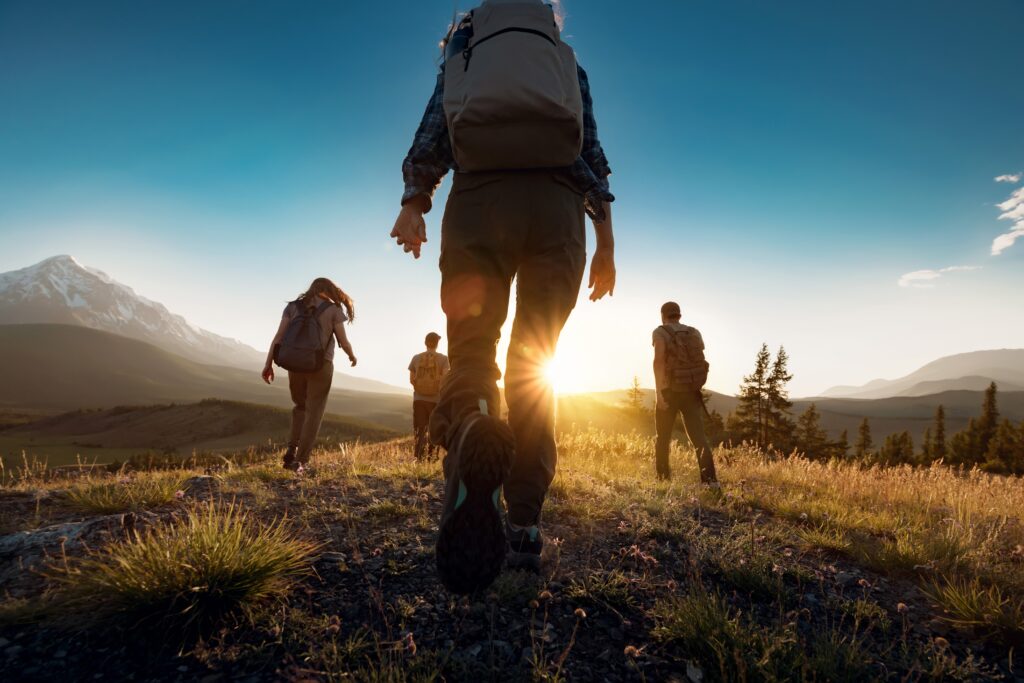
The benefits of adventure travel extend far beyond the immediate thrill. These experiences foster profound personal growth and contribute positively to our relationship with the planet.
Benefits of Engaging in Adventure Travel
A. Enhanced Physical and Mental Resilience:
Adventure travel pushes physical limits and requires mental fortitude, building strength, endurance, and the ability to cope with challenges, translating into greater resilience in daily life. The challenges encountered, from navigating difficult terrain to enduring unexpected weather, hone problem-solving skills and mental toughness. This increased resilience isn’t just for future trips; it equips individuals to better handle the stresses and uncertainties of everyday life.
B. Profound Personal Growth and Self-Discovery:
Navigating unfamiliar terrain, overcoming obstacles, and stepping outside one’s comfort zone fosters self-reliance, problem-solving skills, and a deeper understanding of one’s capabilities and inner strength. Many adventurers report a significant boost in self-confidence and a clearer sense of purpose after successfully completing a challenging trip. The sense of accomplishment derived from facing and overcoming fears can be truly life-altering.
C. Deep Connection with Nature:
Spending extended time in wild environments cultivates a profound appreciation for natural beauty, biodiversity, and the delicate balance of ecosystems, fostering a sense of stewardship and environmental awareness. Away from urban distractions, travelers can truly immerse themselves in the sights, sounds, and smells of nature, fostering a powerful bond that often translates into a desire to protect these precious environments. This connection can lead to a more sustainable lifestyle long after the trip ends.
D. Stress Reduction and Digital Detox:
The immersive nature of adventure travel, often in remote areas, provides an invaluable break from digital distractions and daily stressors, leading to significant reductions in anxiety and improved mental clarity. The enforced disconnection from phones and computers allows the mind to quiet down, reducing mental clutter and fostering a sense of peace and mindfulness that is increasingly difficult to achieve in our always-on world.
E. Authentic Cultural Immersion:
Many adventure trips involve direct interaction with local communities, providing unique insights into different cultures, fostering empathy, and challenging preconceived notions. Whether it’s sharing a meal with a local family in a remote village or learning traditional skills from indigenous guides, these encounters provide a much deeper understanding of the world than simply observing from afar. They break down barriers and build bridges of understanding.
F. Development of New Skills:
From navigation and wilderness first aid to specific sports techniques (climbing, kayaking), adventure travel often involves acquiring practical, life-enhancing skills that boost confidence and competence. These aren’t just recreational skills; they are often valuable life skills that enhance self-reliance and preparedness for a variety of situations, providing tangible takeaways from the experience.
The Industry’s Adaptations
The growing demand for diverse, meaningful, and responsible adventure experiences is compelling the travel industry to adapt and innovate at an unprecedented pace.
Industry Adaptations and Future Outlook
A. Hyper-Personalization and Niche Offerings:
Adventure travel companies are moving beyond generic packages to offer highly personalized trips tailored to individual interests, fitness levels, and desired levels of challenge, utilizing data and AI to match travelers with their ideal adventure. This means travelers can now find trips specifically designed for birdwatching and hiking, or photography-focused mountaineering expeditions, or even multi-generational family adventures that cater to varying physical abilities within one group, ensuring a truly bespoke experience.
B. Emphasis on Local Guides and Community Empowerment:
There’s a growing commitment to hiring, training, and empowering local guides and staff, ensuring that the economic benefits of tourism stay within the community and that authentic cultural insights are provided. This also includes co-creating experiences with indigenous communities. This not only provides genuine, insider perspectives to travelers but also fosters sustainable economic development in often remote and underserved regions, respecting and preserving local knowledge and traditions.
C. Rigorous Sustainability Certifications and Practices:
Operators are increasingly seeking and promoting third-party sustainability certifications (e.g., B Corp, Leave No Trace accreditation) and implementing robust environmental management systems, recognizing that genuine eco-responsibility is a key differentiator. This includes transparent reporting on their environmental footprint, waste management strategies, and community impact. The industry understands that preserving the natural environment is crucial for its long-term viability, and responsible practices are no longer optional but essential.
D. Development of Bespoke, Luxury Adventure:
For high-net-worth individuals, exclusive, highly customized adventure trips are emerging, combining extreme comfort and unique access with challenging activities and remote destinations, often involving private jets or luxury vessels. This niche segment often incorporates glamping in remote wildernesses, gourmet dining experiences in the wild, or private access to unique natural phenomena, offering unparalleled experiences without sacrificing comfort.
E. “Adventure Education” and Skill-Building Retreats:
A growing segment focuses on teaching adventure skills (e.g., survival, navigation, photography, climbing techniques) in immersive, experiential settings, empowering travelers to embark on their own adventures more safely and competently. These structured learning environments, often led by certified experts, provide foundational skills that not only enhance the current trip but also equip travelers for future independent explorations, fostering a deeper, more informed engagement with adventure.
Conclusion
The evolution of adventure travel is a dynamic response to a global yearning for meaning, connection, and personal challenge. It’s no longer just about the thrill of the extreme; it’s about the profound impact of pushing boundaries, immersing in nature, and connecting with diverse cultures in authentic, responsible ways. The new thrills revealed within this sector offer something for everyone, from the gentle explorer to the adrenaline junkie, promising more than just a vacation, but a journey of transformation.
By embracing innovation, prioritizing sustainability, and continually diversifying its offerings, adventure travel is not just growing; it’s leading the way in shaping a more conscious and fulfilling approach to global exploration. So, whether it’s a micro-adventure in your backyard or an epic expedition to a distant land, the call of the wild is stronger than ever. Answer boldly, and discover the extraordinary within yourself and the world.

